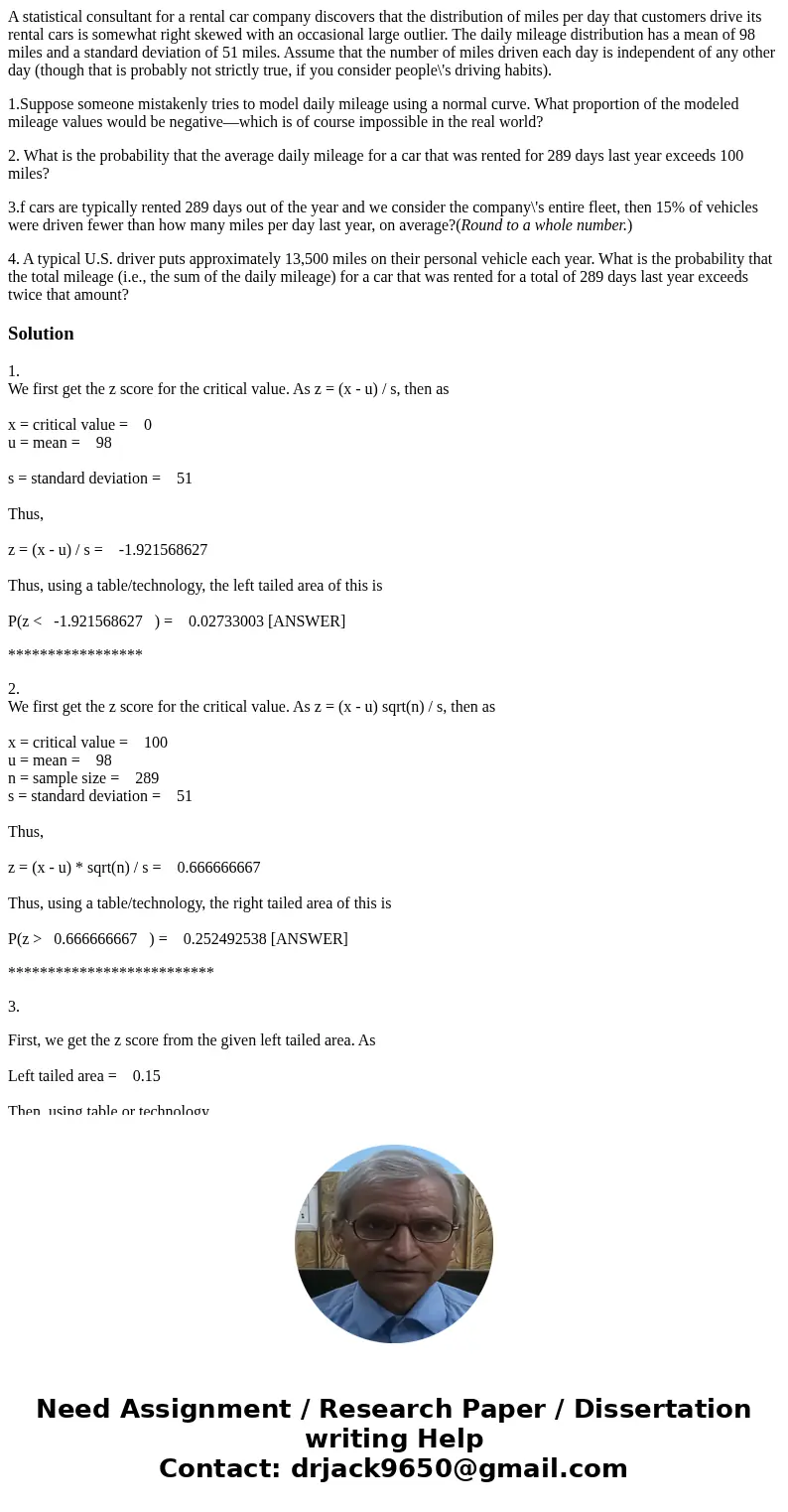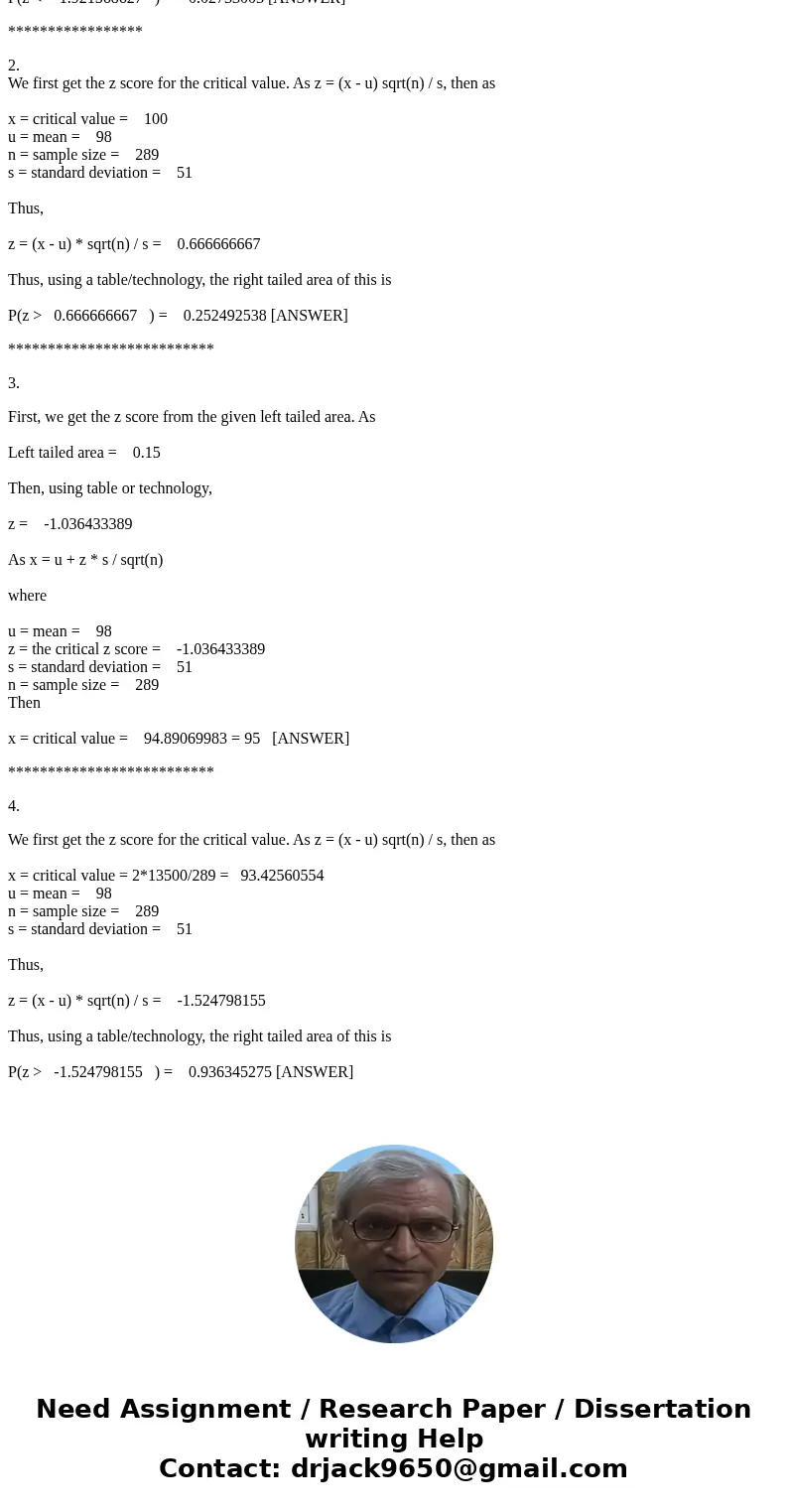A statistical consultant for a rental car company discovers
A statistical consultant for a rental car company discovers that the distribution of miles per day that customers drive its rental cars is somewhat right skewed with an occasional large outlier. The daily mileage distribution has a mean of 98 miles and a standard deviation of 51 miles. Assume that the number of miles driven each day is independent of any other day (though that is probably not strictly true, if you consider people\'s driving habits).
1.Suppose someone mistakenly tries to model daily mileage using a normal curve. What proportion of the modeled mileage values would be negative—which is of course impossible in the real world?
2. What is the probability that the average daily mileage for a car that was rented for 289 days last year exceeds 100 miles?
3.f cars are typically rented 289 days out of the year and we consider the company\'s entire fleet, then 15% of vehicles were driven fewer than how many miles per day last year, on average?(Round to a whole number.)
4. A typical U.S. driver puts approximately 13,500 miles on their personal vehicle each year. What is the probability that the total mileage (i.e., the sum of the daily mileage) for a car that was rented for a total of 289 days last year exceeds twice that amount?
Solution
1.
We first get the z score for the critical value. As z = (x - u) / s, then as
x = critical value = 0
u = mean = 98
s = standard deviation = 51
Thus,
z = (x - u) / s = -1.921568627
Thus, using a table/technology, the left tailed area of this is
P(z < -1.921568627 ) = 0.02733003 [ANSWER]
*****************
2.
We first get the z score for the critical value. As z = (x - u) sqrt(n) / s, then as
x = critical value = 100
u = mean = 98
n = sample size = 289
s = standard deviation = 51
Thus,
z = (x - u) * sqrt(n) / s = 0.666666667
Thus, using a table/technology, the right tailed area of this is
P(z > 0.666666667 ) = 0.252492538 [ANSWER]
**************************
3.
First, we get the z score from the given left tailed area. As
Left tailed area = 0.15
Then, using table or technology,
z = -1.036433389
As x = u + z * s / sqrt(n)
where
u = mean = 98
z = the critical z score = -1.036433389
s = standard deviation = 51
n = sample size = 289
Then
x = critical value = 94.89069983 = 95 [ANSWER]
**************************
4.
We first get the z score for the critical value. As z = (x - u) sqrt(n) / s, then as
x = critical value = 2*13500/289 = 93.42560554
u = mean = 98
n = sample size = 289
s = standard deviation = 51
Thus,
z = (x - u) * sqrt(n) / s = -1.524798155
Thus, using a table/technology, the right tailed area of this is
P(z > -1.524798155 ) = 0.936345275 [ANSWER]


 Homework Sourse
Homework Sourse